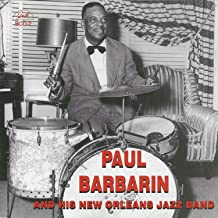
Daily Dose Of Jazz…
Paul Barbarin was born Adolphe Paul Barbarin on May 5, 1899 in New Orleans, Louisiana into a family of musicians, that included his father, three of his brothers, and his nephew Danny Barker. He was a member of the Silver Leaf Orchestra and the Young Olympia Band.
Moving to Chicago, Illinois in 1917 he worked with Freddie Keppard and Jimmie Noone. For two years beginning in 1925, Paul was a member of King Oliver’s band. The following year, he moved to New York City and played in Luis Russell’s band for about four years. Leaving Russell, he worked as a freelance musician, but he returned to Russell’s band when it backed Louis Armstrong.
For a brief time beginning in 1942, he worked for Red Allen’s sextet, with Sidney Bechet in 1944 and Art Hodes in 1953. Returning to New Orleans in 1955 Barbarin founded the Onward Brass Band where he spent the rest of his life as the leader of that band.
Drummer Paul Barbarin passed away on February 17, 1969, while playing snare drums during a Mardi Gras parade. Record producer Al Rose said that his funeral “attracted one of the great mobs in New Orleans funeral history”.
More Posts: bandleader,drums,history,instrumental,jazz,music
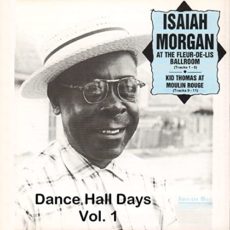
Daily Dose Of Jazz…
Ike Morgan, born Isaiah Morgan, came into the world on April 7, 1897 in Bertrandville, Louisiana into a musical family. He played in Plaquemines Parish in the early 1910s and then moved to New Orleans.
He led his brothers Al, Sam and Andrew in the Young Morgan Band beginning in 1922, which was later led by Sam and this ensemble recorded for Columbia Records. After Sam suffered a stroke in 1932, Ike resumed the leadership of the group, but it disassembled in 1933.
In the Thirties and Forties, Morgan was a bandleader in the Biloxi, Mississippi area, and played with Andrew there as well. Isaiah recorded in 1955 on an album called Dance Hall Days, Vol. 1, his group at this time featured Freddie Land on piano.
Retiring from music the following year, trumpeter Ike Morgan passed away on May 11, 1966 in New Orleans, Louisiana.
More Posts: bandleader,history,instrumental,jazz,trumpet
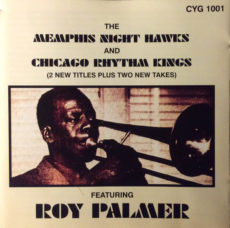
Daily Dose Of Jazz…
Roy Palmer was born on April 2, 1892 in the Carrollton neighborhood of uptown New Orleans, Louisiana. He learned to play violin, guitar, and trumpet and began his career in 1906 in the Big Easy as a guitarist with the Rozelle Orchestra. Leaving the orchestra he began playing the trombone in Storyville with Papa Celestin, Richard M. Jones, Freddie Keppard, Willie Hightower, during the DepressionTuxedo Brass Band, and Onward Brass Band.
In 1917 he left New Orleans and moved to Chicago, Illinois where he worked with King Oliver, Lawrence Duhe, and Doc Cook. From the 1920s on Palmer recorded with Johnny Dodds, Jelly Roll Morton, Ida Cox, the Alabama Rascals, and the State Street Ramblers. By the 1930s during the Depression, he curtailed his performing worked in a factory and began his career as a music teacher, which included students Preston Jackson and Albert Wynn.
Trombonist Roy Palmer passed away on December 22, 1963, in Chicago, Illinois.
More Posts: history,instrumental,jazz,music,trombone
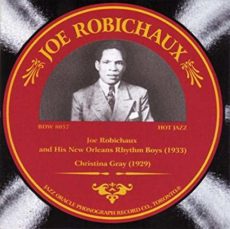
Daily Dose Of Jazz…
Joseph Robichaux, born March 8, 1900 in New Orleans, Louisiana and played piano from a young age and went on to study at New Orleans University. After working in the O.J. Beatty Carnival, he played with Tig Chambers briefly in 1918 before returning to New Orleans and played with Oscar Celestin, Earl Humphrey, Lee Collins, and The Black Eagles in 1922 and 1923.
He arranged music for and recorded with the Jones-Collins Astoria Hot Eight in 1929 and accompanied Christina Gray on a recording session that same year. In 1931 he formed his own ensemble, featuring Eugene Ware on trumpet, Alfred Guichard on clarinet and alto saxophone, Gene Porter on tenor sax, and Ward Crosby on drums.
They journeyed to New York City to record for Vocalion in August 1933, laying down 22 mostly stomping, uptempo sides and two alternate takes in a marathon 5-day recording schedule. Vocalion issued 10 records over the next year and 2 tracks with vocalist Chick Bullock were issued under his name on Banner, Domino, Oriole, Perfect, and Romeo record labels.
Unfortunately for the musicians and potential audiences problems with the musicians’ union in New York prevented them from being able to play live there, so they returned to New Orleans not long after recording. Robichaux expanded the size of his ensemble over the course of the 1930s and Earl Bostic was among those who joined its ranks.
The band toured Cuba in the mid-1930s and recorded for Decca Records in 1936, recording 4 sides in New Orleans, however, they were all rejected. By 1939 Robichaux’s ensemble disbanded, and he found work performing solo, mostly in New Orleans. He recorded as an accompanist on R&B recordings in the Fifties and played with Lizzie Miles.
Late in his life, he played with George Lewis from 1957 to 1964, Peter Bocage in 1962, and performed at Preservation Hall. Bandleader and pianist Joe Robichaux passed away from a heart attack at the age of 64 in 1965 in his hometown of New Orleans.
More Posts: bandleader,history,instrumental,jazz,music,piano
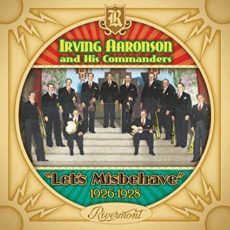
Daily Dose Of Jazz…
Irving A. Aaronson was born in New York on February 7, 1895 and learned to play the piano from Alfred Sendry at the David Mannes School for music. By age 11 he played accompaniment in silent movie theaters called nickelodeons. In 1921 he co-wrote a hit song, Boo-Hoo-Hoo.
When his band was signed with the Victor label, the band name was changed to Irving Aaronson and his Commanders. From 1926 to 1929, the band recorded for the label and had a notable success with Let’s Misbehave in 1927. The band appeared in Cole Porter’s Broadway musical Paris, in 1928 and broadcasted on KFWB in Hollywood, California in 1929.
In 1935, he starred in the Irving Aaronson Orchestra radio program on NBC. The band toured movie theatres and ballrooms across the US before calling it quits in the mid-1930s, But his band had included at various times musicians such as Phil Saxe, Joe Gillespie, Artie Shaw, Gene Krupa, Tony Pastor, and western movie actor Fuzzy Knight was the band’s drummer in the late Twenties.
By the time he turned 45, Irving was working as a musical director for MGM studios. He remained there in that capacity, voicing for television Mr. Nobody in the MGM’s animation Betty Boop for President and as an assistant to producer Joe Pasternak, until his death from a heart attack. Pianist, bandleader and composer Irving Aaronson passed away in Hollywood, California on March 10, 1963 at the age of 68. His most popular song, The Loveliest Night of the Year, was not recorded with his band but was adapted by Aaronson in 1950 for the Mario Lanza film The Great Caruso.
More Posts: bandleader,composer,history,instrumental,jazz,music,piano





